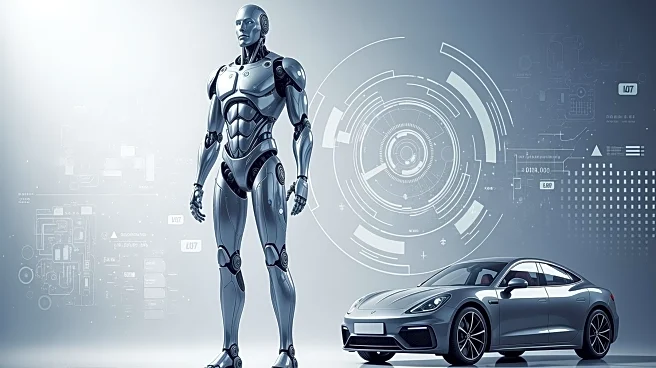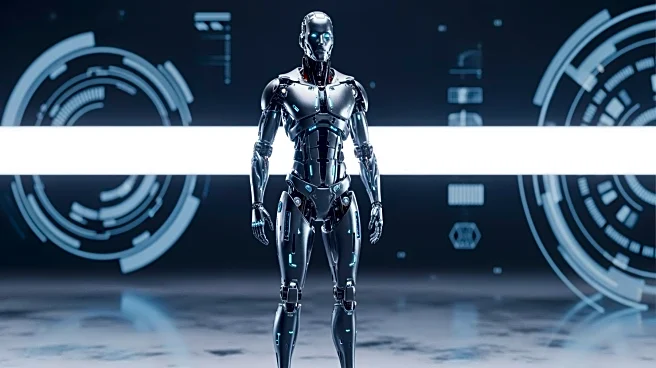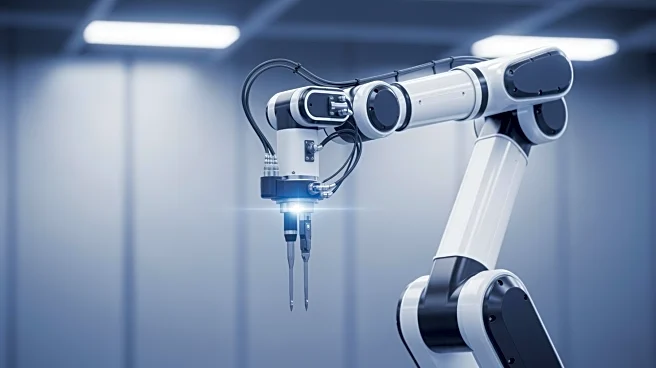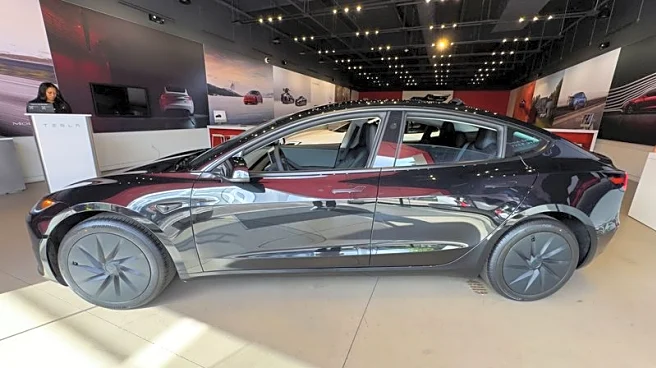What's Happening?
XPeng, a prominent electric vehicle startup in China, has introduced its latest innovation, the Iron humanoid robot, which is poised to challenge Tesla's Optimus in the race for mass production. The Iron robot is powered
by an all-solid-state battery, known for its high energy density, making it particularly suitable for applications requiring compact and efficient power sources. The robot features a highly anthropomorphic design, including a female figure catwalk gait, and is equipped with advanced technology such as three custom Turing AI chips providing substantial computing power. The robot's body boasts 82 degrees of freedom, with its robotic hand featuring 22 degrees of freedom, matching Tesla's Optimus. XPeng plans to begin mass production of the Iron robot in late 2026, with potential applications in various industries as a tourist guide, traffic cop, or shopping advisor.
Why It's Important?
The introduction of XPeng's Iron humanoid robot signifies a major advancement in robotics, particularly in the use of solid-state batteries, which offer higher energy density compared to traditional batteries. This development could have significant implications for industries reliant on robotics, such as tourism, retail, and public services, by providing more efficient and versatile robotic solutions. The competition between XPeng and Tesla in the humanoid robot market could drive innovation and accelerate the adoption of advanced robotics in everyday applications. Businesses and consumers stand to benefit from improved robotic capabilities, potentially transforming service delivery and operational efficiency.
What's Next?
XPeng's plan to commence mass production of the Iron humanoid robot in late 2026 suggests a timeline for potential market entry and commercialization. As XPeng continues to develop and refine its robotic technology, stakeholders in various industries may begin to explore partnerships or pilot programs to integrate these robots into their operations. The competitive landscape between XPeng and Tesla could lead to further advancements in robotic technology, with both companies striving to enhance their offerings and capture market share. Observers will be keen to see how XPeng's Iron robot performs in real-world applications and whether it can indeed surpass Tesla's Optimus in terms of functionality and market presence.
Beyond the Headlines
The development of XPeng's Iron humanoid robot raises ethical and cultural considerations regarding the increasing anthropomorphism of robots and their integration into human-centric roles. As robots become more lifelike, questions about their impact on employment, privacy, and human interaction may arise. Additionally, the use of solid-state batteries in robotics could influence broader energy storage solutions, potentially affecting industries beyond robotics, such as electric vehicles and consumer electronics. The ongoing evolution of humanoid robots may also prompt discussions about regulatory frameworks and standards to ensure safe and ethical deployment.












